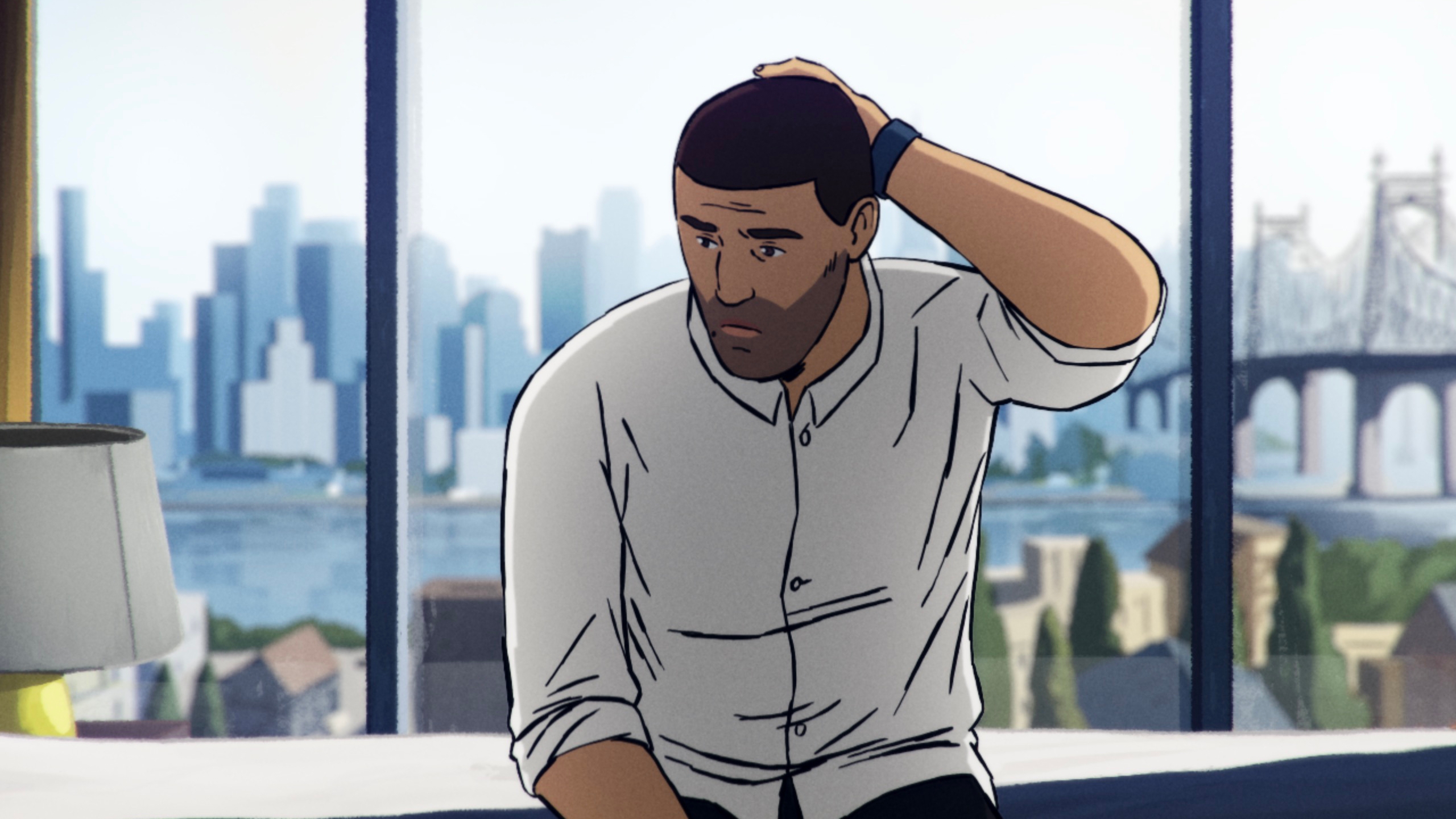The animated Flee paints a refugee’s story in vivid colors
Director Jonas Poher Rasmussen uses the medium to protect his subject’s anonymity and to bring his experiences to life
Film Reviews Flee
The use of animation in documentaries used to be a novel stylistic flourish, until filmmakers started using those interludes so often to cover for missing footage that it started to feel less inspired and more gimmicky. So if nothing else, Jonas Poher Rasmussen’s intense and moving Flee is a reminder of how animation in nonfiction movies can elevate the storytelling. By employing a variety of techniques—chalky abstraction, flat 2D illustrations, even some archival live-action news footage—Rasmussen and a team of artists and animators keep audiences alert and engaged, while taking them inside the somber first-person account of an Afghan refugee who has never fully processed his traumatic childhood.
The refugee is called “Amin”—not his real name—and the story he tells takes some jarring turns. Forced from his home during the civil strife of the early 1990s, Amin found his way to an economically depressed and chaotic post-Soviet Russia, where he and his family gradually splintered as they tried various schemes to escape to Scandinavia. The most arresting scenes in Flee dramatize some of those failed attempts: a stomach-churning ride in a flooded ship’s cargo hold; a confrontation in a darkened, snowy forest; a nerve-wracking conversation with an immigration agent at an airport.
None of this, obviously, could’ve been filmed at the time—though Rasmussen does sometimes insert real footage of similar situations, pulled from old news reports about refugees. Beyond effectively protecting Amin’s identity and preserving his anonymity, the animation also brings his memories to life. And this isn’t just helpful during the more suspenseful moments. In some ways, the illustrations are even more effective when Amin is describing something mundane, like his secret sexual attraction to Jean-Claude Van Damme; or the time he walked past the opening of a new McDonald’s in Russia, where fake Disney characters danced outside the restaurant; or the many times his family staved off boredom by watching Mexican telenovelas dubbed into Russian.
Ultimately, what makes Flee special—and at times a little unsatisfying, to be honest—is that it is very much a real person’s story, and not always tidy. While Amin is mired in the middle of an international humanitarian crisis, he’s also growing up and dealing with complex feelings about who he is and who he wants to be. His identity as a refugee makes him a target for government authorities and bigoted citizens. And his budding awareness of his homosexuality makes him terrified that he’ll be lonely and unhappy in a gay-unfriendly eastern Europe for the rest of his life.
Thanks to a framing device that sees Rasmussen interviewing the adult Amin (whom he’s known since they were teenagers together in Denmark), the viewer knows from the beginning that one day he will find love. As the movie begins, Amin’s biggest dilemma isn’t locating a safe place to sleep but rather if he wants to settle down with his boyfriend in the countryside or pursue an academic career in the United States. As life-defining choices go, it’s much less urgent than the potentially fatal dangers shown throughout the film.
But while Flee never fully bridges those gaps between the “man on the run” backstory and the “man who isn’t sure he can be a good husband” present-day narrative, Rasmussen and Amin do bring their testimonial to a revealingly poignant place, just before the closing credits. In the end, this is a well-drawn depiction of what happens to a person who is rendered rootless, and is left to live perpetually on the defensive. “When you’re in a safe place you’re on your guard,” Amin admits, and his unshakeable anxiety even now is evident in every carefully placed line on his cartoon face.
1 Comment
I saw this on Saturday. Such a powerful, unforgettable film, yet the owner of the local arthouse cinema showing it told me that ticket sales have been slow.So I’m trying to do the whole word-of mouth thing as best I can.